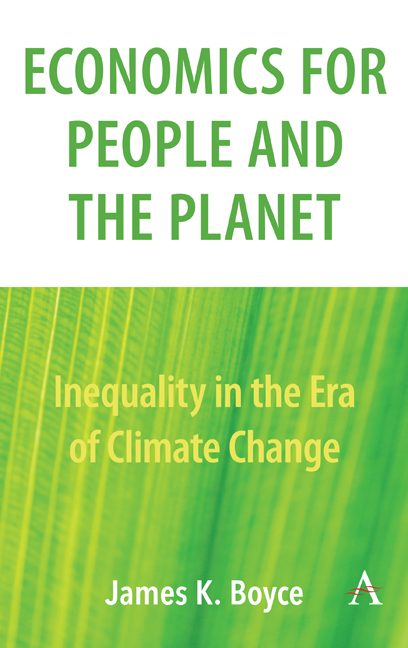Book contents
- Frontmatter
- Contents
- List of Illustrations
- Acknowledgements
- Part I Rethinking Economics and the Environment
- Part II Environmental Injustice
- Part III Climate Policy
- Chapter 17 Smart Climate Policy
- Chapter 18 Investment in Disadvantaged Communities
- Chapter 19 Dividends for All
- Chapter 20 Truth Spill
- Chapter 21 Four Pillars of Climate Justice
- Chapter 22 The Perverse Logic of Offsets
- Chapter 23 Climate Policy as Wealth Creation
- Chapter 24 The Carbon Dividend
- Chapter 25 Keeping the Government Whole
- Chapter 26 Air Quality Co-benefits in Climate Policy
- Chapter 27 Climate Adaptation: Protecting Money or People?
- Chapter 28 Forging a Sustainable Climate Policy
- Notes
- Publication History
- Index
Chapter 22 - The Perverse Logic of Offsets
from Part III - Climate Policy
Published online by Cambridge University Press: 12 February 2019
- Frontmatter
- Contents
- List of Illustrations
- Acknowledgements
- Part I Rethinking Economics and the Environment
- Part II Environmental Injustice
- Part III Climate Policy
- Chapter 17 Smart Climate Policy
- Chapter 18 Investment in Disadvantaged Communities
- Chapter 19 Dividends for All
- Chapter 20 Truth Spill
- Chapter 21 Four Pillars of Climate Justice
- Chapter 22 The Perverse Logic of Offsets
- Chapter 23 Climate Policy as Wealth Creation
- Chapter 24 The Carbon Dividend
- Chapter 25 Keeping the Government Whole
- Chapter 26 Air Quality Co-benefits in Climate Policy
- Chapter 27 Climate Adaptation: Protecting Money or People?
- Chapter 28 Forging a Sustainable Climate Policy
- Notes
- Publication History
- Index
Summary
Greenhouse gas offsets in the Kyoto Protocol's Clean Development Mechanism created perverse incentives to pollute more.
A little-known greenhouse gas called HFC-23 made the news in 2012. Also called fluoroform, it's a waste gas generated in the manufacture of refrigerants. Compared to carbon dioxide (CO2), HFC-23 is a minor greenhouse gas because the quantities emitted are small. Pound-for-pound, however, it traps more than 10,000 times as much heat.
The UN's Clean Development Mechanism (CDM), set up under the Kyoto Protocol as a way for industrialized countries to ‘offset’ their own CO2 emissions by paying for comparable actions in developing countries, counts destruction of one pound of HFC-23 as equivalent to prevention of 11,700 pounds of CO2 emissions.
The CDM pays large sums to coolant manufacturers in India, China and elsewhere to destroy the HFC-23 they produce. Indeed, these payments became the largest single item in the CDM budget: in 2012, HFC-23 disposal got 50 per cent more CDM money than wind power and 100 times more than solar energy.
The rub is that paying firms not to pollute gives rise to a perverse incentive. A firm that threatens to pollute more gets paid more. Manufacturers upped their production of the refrigerants (which are themselves greenhouse gases, too, albeit less potent ones), in order to produce more HFC-23 as a byproduct, so they then can get paid to destroy it.
It's a great example of what economists E. K. Hunt and Ralph d'Arge once called capitalism's ‘invisible foot’: when polluters are paid to clean up pollution, they create more of it, guided by an evil twin of Adam Smith's invisible hand. Some firms made half their total profits from HFC-23 disposal payments.
People living near the coolant factories didn't do as well. In the state of Gujarat in western India, residents of an adjacent village complained of skin rashes, birth defects and damages to crops caused by a noxious fog that burns the eyes and lungs.
When the European Union halted further HFC-23 payments, firms responded by threatening to release the gas into the atmosphere. A scientist at the Environmental Investigation Agency, which opposes the pollution subsidies, put the matter bluntly: ‘Attempting to force countries into squandering billions on fake offsets that actually increase production of greenhouse gases,’ he said, ‘is extortion.’
- Type
- Chapter
- Information
- Economics for People and the PlanetInequality in the Era of Climate Change, pp. 107 - 108Publisher: Anthem PressPrint publication year: 2019



